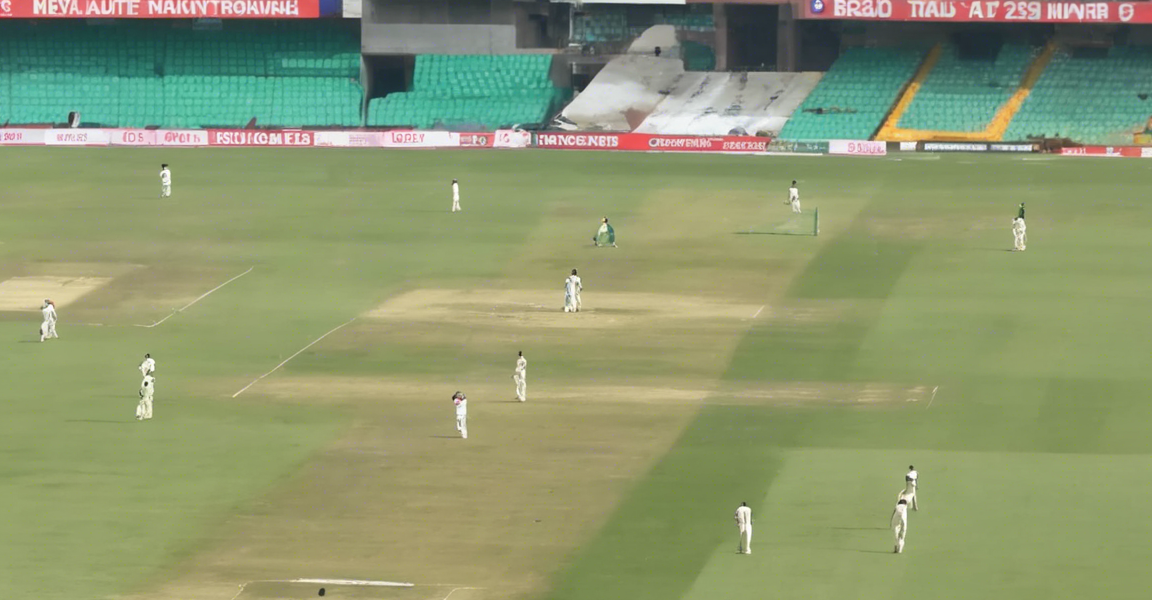When it comes to cricket, one of the most crucial factors that can determine the outcome of a match is the condition of the pitch. The pitch is essentially the playing field where the game unfolds, and its characteristics can have a significant impact on the strategy and performance of both teams. In this comprehensive guide, we will delve into the importance of match pitch report analysis in cricket, exploring the various factors that influence the pitch, how teams can adapt their game plans accordingly, and providing insights on how pitch conditions can evolve over the course of a match.
Factors Influencing Pitch Conditions
1. Pitch Type:
- Pitches can be broadly categorized into three types: batting-friendly, bowler-friendly, and balanced.
- Batting-friendly pitches typically offer a true bounce and pace, making it easier for batsmen to play their shots.
- Bowler-friendly pitches, on the other hand, may have uneven bounce, cracks, or moisture that assist the bowlers in generating movement.
- Balanced pitches offer a fair contest between bat and ball, providing assistance to both bowlers and batsmen.
2. Weather Conditions:
- Factors such as humidity, temperature, and wind can all influence how the pitch behaves.
- High humidity can lead to moisture retention in the pitch, aiding swing and seam movement for bowlers.
- Hot and dry conditions can cause pitches to crack and deteriorate, offering turn and variable bounce for spinners.
3. Pitch Preparation:
- Groundsmen play a crucial role in preparing the pitch before a match.
- The amount of grass left on the pitch, the rolling process, and the use of pitch covers can all impact how the pitch plays.
Interpreting Match Pitch Reports
1. Toss Strategy:
- Winning the toss can be crucial, especially on pitches that are likely to change in character as the match progresses.
- Teams may opt to bat or bowl first based on their assessment of how the pitch is likely to behave.
2. Team Selection:
- Team composition can be tailored to suit the pitch conditions.
- Teams may opt to include an extra spinner or seamer based on the expected behavior of the pitch.
3. Batting Approach:
- Batsmen need to adapt their technique and shot selection based on the pitch conditions.
- Pitching the ball up on seaming pitches or playing with soft hands on slow, turning tracks are common strategies.
4. Bowling Strategy:
- Bowlers need to vary their pace and line and length based on how the pitch is playing.
- Seamers may look to exploit seam movement, while spinners may focus on flight and turn.
Evolution of Pitch Conditions
1. Day-Night Matches:
- Pitch conditions can change significantly in day-night matches due to the influence of dew.
- Bowlers may find it harder to grip the ball, while batsmen may find it easier to score under lights.
2. Multi-Day Matches:
- Pitches in multi-day matches can deteriorate over time, offering more assistance to spinners as the match progresses.
- Footmarks created by bowlers can also impact the behavior of the pitch.
3. Weather Interruptions:
- Rain interruptions can alter the nature of the pitch, making it harder or easier to bat or bowl depending on the conditions post-interruption.
- Duckworth-Lewis-Stern (DLS) method may come into play in limited-overs matches affected by rain.
Frequently Asked Questions (FAQs)
1. How can teams assess pitch conditions before a match?
- Teams typically rely on pitch inspections, talking to groundsmen, and past match data to assess pitch conditions.
2. Do pitches favor batsmen or bowlers in T20 matches?
- T20 pitches are often flat and batting-friendly to encourage high-scoring games, but conditions can vary depending on location and weather.
3. How does pitch condition impact team strategies in Test matches?
- Test teams often have specialized bowlers and batsmen for different pitch conditions, with strategies evolving over the course of the match.
4. Can pitch reports be accurate days before a match?
- While initial pitch reports can provide basic insights, the actual behavior of the pitch may change due to weather conditions and wear and tear.
5. What role do spinners play on turning pitches?
- Spinners are crucial on turning pitches, using their variations in flight and spin to exploit the conditions and trouble batsmen.
In conclusion, match pitch report analysis is a critical aspect of cricket strategy, with teams needing to adapt and evolve their game plans based on the conditions they encounter. By understanding the various factors that influence pitch behavior, teams can optimize their chances of success and leverage the nuances of the game to their advantage.




